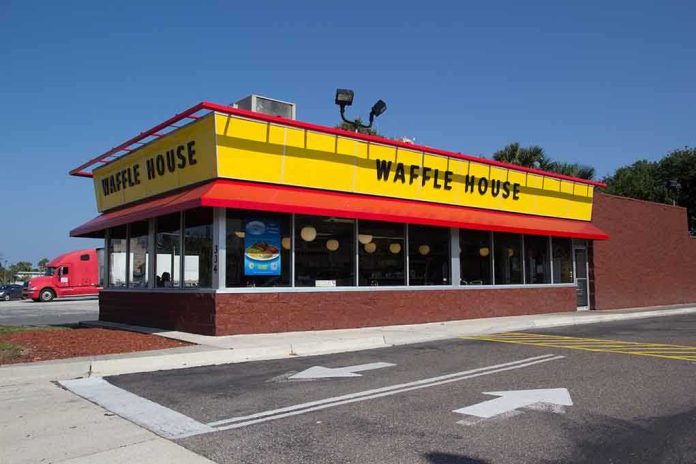
A staggering decline in restaurant visits highlights a growing economic concern for American families.
Story Highlights
- Americans made 1 billion fewer restaurant visits in Q1 2025 compared to the previous year.
- Inflation and affordability gaps drive a shift towards at-home dining.
- Restaurant chains increase emphasis on value deals to attract customers.
- Higher-income households are also cutting back on dining out.
Americans Pull Back on Dining Out
In a significant economic shift, Americans visited restaurants 1 billion fewer times in the first quarter of 2025 compared to the same period in 2024. This decline, reported by Circana, underscores consumers’ growing price sensitivity and a shift towards at-home dining due to persistent inflation. The foodservice industry, once buoyed by recovering post-pandemic spending, now grapples with a substantial reduction in traffic and a renewed focus on value-driven promotions to lure patrons back.
This reduction is not confined to lower-income groups; higher-income households, which previously drove post-pandemic restaurant visit increases, are now also retreating. This trend indicates a broad-based consumer pullback, suggesting that the affordability gap between dining out and at-home meals is widening. The cost of a foodservice occasion is reportedly over four times that of an at-home meal, putting additional pressure on visit frequency.
Industry Response: Leaning Into Value
In response to these challenges, restaurant chains are intensifying their focus on value deals. According to Circana, the industry has seen a rise in competitive meal offerings as chains strive to maintain traffic. The “value war” that began in 2024 is expected to persist, with top chains leveraging nostalgia and emotional brand connections as key strategies to attract consumers. However, smaller operators face significant margin pressures, as they struggle to match the aggressive pricing strategies of larger chains.
The emphasis on value is critical as consumer spending remains resilient, but traffic softens. Chains are employing limited-time offers and loyalty-driven discounts, aiming to stimulate visits without sacrificing margins. Industry experts highlight the enduring importance of nostalgia as an effective traffic driver, suggesting that emotional connections can help bridge the perceived value gap without substantial price cuts.
Long-Term Implications for the Restaurant Industry
Looking forward, the divergence between spending and traffic may continue if the structural cost gaps remain unaddressed. Restaurants may need to innovate with more durable value propositions and operational efficiencies to survive in a competitive market. The competitive landscape could see a widening gap between large chains capable of funding extensive value offerings and smaller independent operators.
Restaurants from IHOP to Chipotle sound alarm over tariffs spooking customers into staying home https://t.co/YC0QykliLm
— ConservativeLibrarian (@ConserLibrarian) August 12, 2025
As the industry adapts, grocery and consumer packaged goods sectors may benefit from consumers’ shift back to at-home dining. Meanwhile, the foodservice industry is likely to see a growing emphasis on technology and loyalty ecosystems to manage yield and drive patronage. The broader economic impact includes potential softening in restaurant employment growth and increased public discourse on “greedflation” versus real cost pressures.
Sources:
Circana Announces Top 50 U.S. Restaurants
Circana Announces Top 50 U.S. Restaurants
Circana Announces Top 50 U.S. Restaurants for 2025
State of U.S. Retail Opportunities










